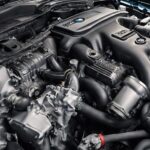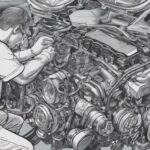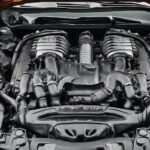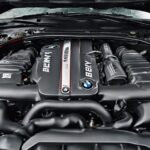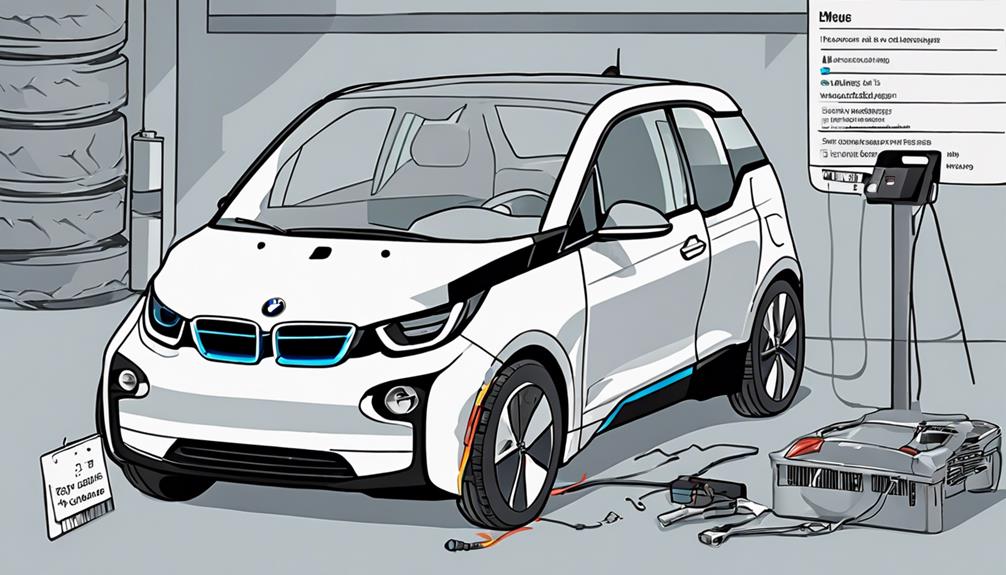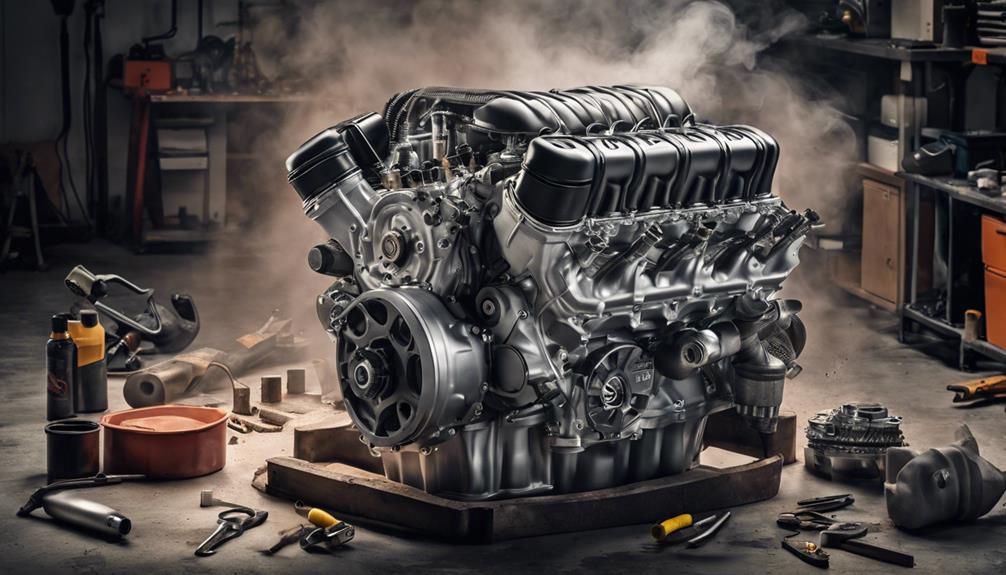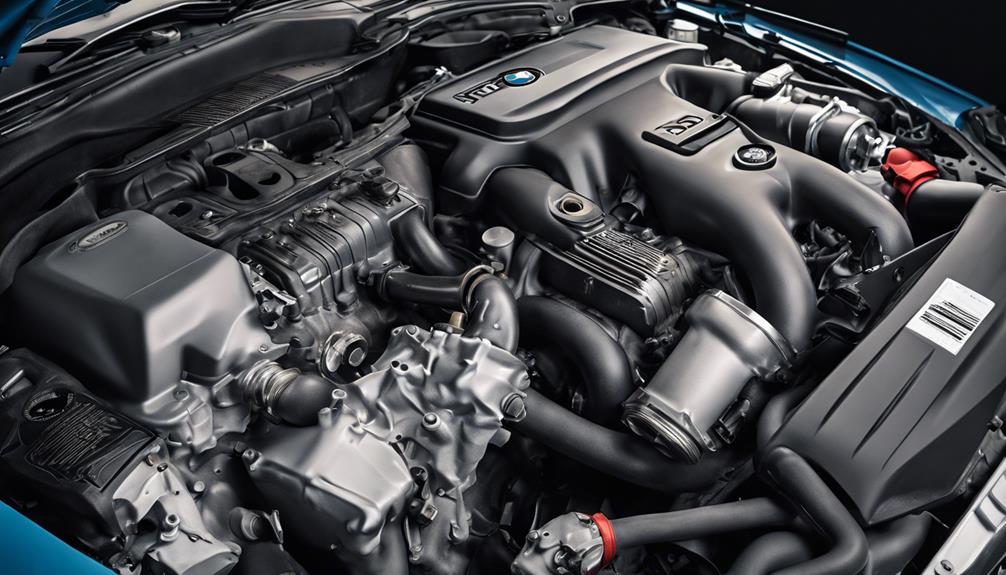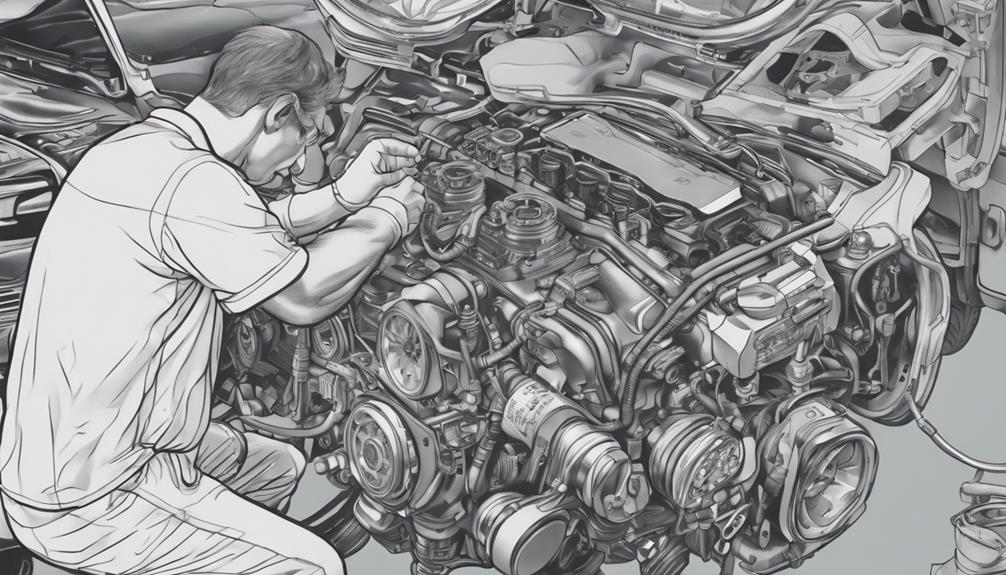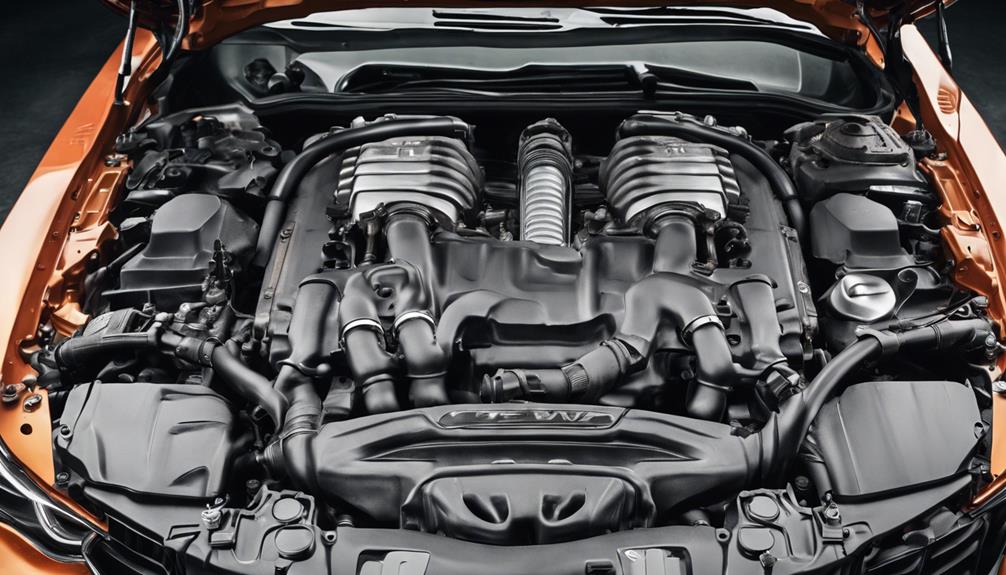If you're hitting the road in a BMW i3, you've probably felt the sting of limited range, with only about 120 kilometers on a single charge, making longer trips a bit of a headache and sparking that range anxiety feeling among drivers. It's a common issue that can really cramp your style and add extra stress to your travel plans. Wouldn't you like to know more about these challenges and how they impact your BMW i3 ownership experience?
Key Takeaways
- Limited range of approximately 120 kilometers on a single charge
- Concerns about battery degradation affecting range over time
- Parts scarcity leading to longer wait times for repairs
- Lightweight carbon fiber construction impacting safety rating
- Higher repair costs due to limited availability of specialized parts
Limited Range on a Single Charge
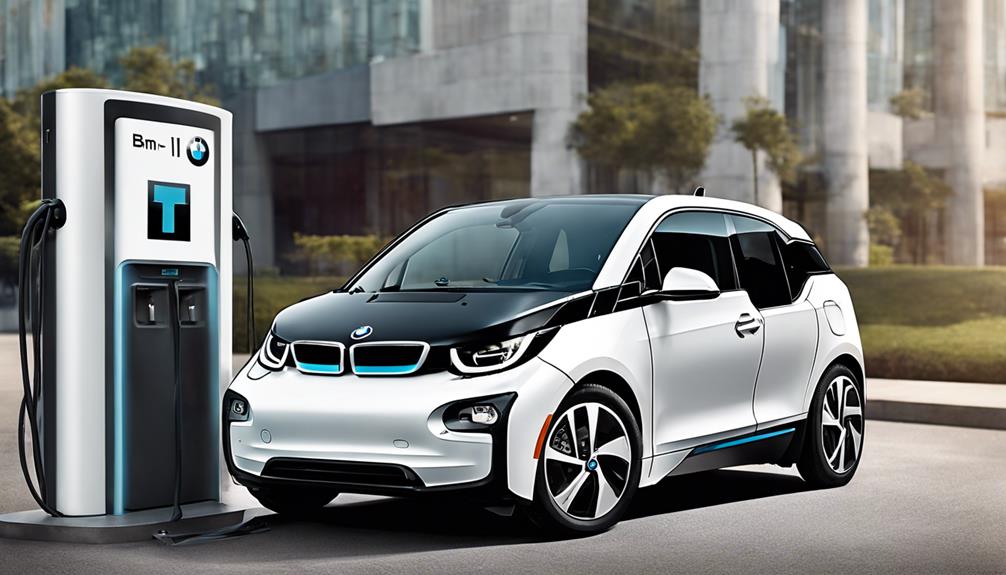
If you're contemplating the BMW i3, be mindful that its restricted range on a single charge can present challenges for your driving needs, particularly for longer distances or high mileage usage. The electric car offers a range of approximately 120 kilometers, which mightn't be adequate for those accustomed to extensive driving or regular long trips. However, there's a solution to this dilemma – the optional petrol engine range extender.
By investing extra, you can equip your BMW i3 with this add-on to achieve a better range, alleviating concerns about running out of power mid-journey.
In comparison to other electric vehicles, the BMW i3's range is somewhat limited, especially for high mileage driving common in North America. While the car may suit European driving habits that involve shorter distances, it may fall short for those accustomed to longer commutes or frequent road trips. So, if your driving routine involves extended journeys, the BMW i3's range limitations mightn't align with your needs, and the range extender could be a necessary addition to guarantee a smoother driving experience.
Dissatisfaction Over Range Limitations
You might find yourself constantly checking the battery level, fearing that you might run out of charge before reaching your destination.
The lack of charging stations in certain areas could add to your worries, making longer journeys a logistical challenge.
Concerns about battery degradation over time might also linger in your mind, affecting your confidence in the BMW i3's long-term reliability.
Range Anxiety Issues
Experiencing discontent with the BMW i3 often stems from the frustrating range limitations that some owners encounter. The i3 offers only about 120 kilometers on a single charge, leading to range anxiety among users, especially when compared to other electric vehicles. The design catering to European driving habits may not align well with the high mileage needs in North America, impacting daily commuting and long-distance travel plans. While the range extender option provides some relief for an extra cost, it may not fully alleviate concerns for all users. Here's a look at some key aspects related to range anxiety in the BMW i3:
| Common Problems With BMW i3 – Range Anxiety Issues |
|---|
| Limited range of around 120 kilometers |
| Impact on daily commuting and long-distance travel |
| Range extender option available for extra cost |
| European driving habits vs. North American needs |
| Frustration and discontent among some users |
Charging Infrastructure Concerns
Charging infrastructure concerns surrounding the BMW i3's dissatisfying range limitations have sparked frustration among owners seeking more practical usability for their high mileage driving needs in North America.
Some users feel the BMW i3's 120-kilometer range is insufficient for their daily driving requirements.
Comparatively, other electric vehicles offer longer ranges, making the i3 less appealing to those with high mileage habits.
Enhancing the charging infrastructure for the BMW i3 could alleviate some of the range anxiety experienced by owners.
The BMW i3's limited range may prompt potential buyers to contemplate vehicles with petrol engine options for extended range capabilities.
Despite its innovative design and futuristic exterior looks, the BMW i3's range limitations remain a significant concern for many users.
Battery Degradation Worries
The BMW i3's battery degradation concerns have cast a shadow over the vehicle's range limitations, stirring dissatisfaction among owners seeking long-lasting electric performance. As owners witness a decrease in battery capacity over time, the once impressive range of the i3 diminishes, making it important to address this issue for long-term enjoyment.
Discussions among BMW i3 owners are buzzing with potential solutions and alternatives to combat this worrisome trend. To make sure you get the most out of your i3, it's vital to keep an eye on the battery health and consider options that ensure your vehicle maintains top performance.
While battery degradation worries may be easy to find, proactive measures can help you tackle these concerns head-on and prolong your electric driving experience.
European Safety Ratings Concerns
You might be surprised to learn that the BMW i3's four-star safety rating from the European safety agency has sparked discussions about its crash test results and Euro NCAP evaluation.
The lightweight carbon fiber reinforced plastic construction, while innovative, could have impacted the safety rating compared to traditional electric vehicles.
These discrepancies invite scrutiny into the BMW i3's safety performance and the implications of its unique materials on crashworthiness.
Safety Rating Discrepancies
With European safety ratings agencies awarding the BMW i3 four stars, concerns have been raised regarding its safety performance. The following points shed light on the safety rating discrepancies:
- The use of carbon fiber reinforced plastic in the BMW i3's construction may have impacted its safety ratings.
- The unique build of the BMW i3 contributes to lower safety ratings compared to more mainstream plug-in electric vehicles.
- Limited availability of parts and the need for warranty due to its distinct construction are important considerations for owners.
- Safety and build quality issues may be a factor for some potential buyers when comparing the BMW i3 to other electric vehicle options.
Crash Test Results
Considering the crash test results for the BMW i3 and the concerns raised by European safety ratings agencies, it becomes evident that its unique lightweight design presents distinct challenges in ensuring top safety performance. The car's safety rating of four stars falls short compared to heavier vehicles, partly due to its carbon fiber reinforced plastic construction. While this material contributes to its innovative design, it impacts its crash test performance.
The lower safety ratings of the i3 in comparison to other popular plug-in electric vehicles highlight the trade-off between weight and safety. Additionally, the unconventional build may lead to limited availability of parts and warranty considerations, adding further complexity to the safety concerns surrounding the BMW i3.
Euro NCAP Evaluation
The Euro NCAP evaluation of the BMW i3 sheds light on the unique safety challenges posed by its lightweight carbon fiber construction. Here are some key points to ponder:
- The BMW i3 received a safety rating of only four stars from Euro NCAP.
- Its carbon fiber reinforced plastic construction impacts its safety ratings.
- Compared to other popular electric vehicles, the BMW i3 has lower safety ratings.
- Limited availability of parts due to its unique build may require warranty coverage for repairs.
- Safety concerns and parts availability issues contribute to the challenges faced in Euro NCAP evaluations of the BMW i3.
Lightweight Design Impacts Safety
Despite its innovative lightweight design, the BMW i3's safety ratings fall short of top marks due to its unique carbon fiber reinforced plastic construction.
The lightweight nature of the car, while beneficial for efficiency and handling, poses challenges in ensuring top-tier safety. This is reflected in the four-star safety ratings from European agencies, which are lower compared to other plug-in electric vehicles.
The use of carbon fiber reinforced plastic, while cutting-edge, may compromise the overall safety of the vehicle in certain crash scenarios. Owners may find themselves grappling with the trade-off between sustainability and safety when driving the BMW i3.
The need for warranty coverage due to limited availability of parts further emphasizes the importance of addressing potential safety concerns.
As a member of the BMW i3 community, understanding the impact of the car's lightweight design on safety can help you make informed decisions and prioritize your driving experience.
Availability of Parts Challenge
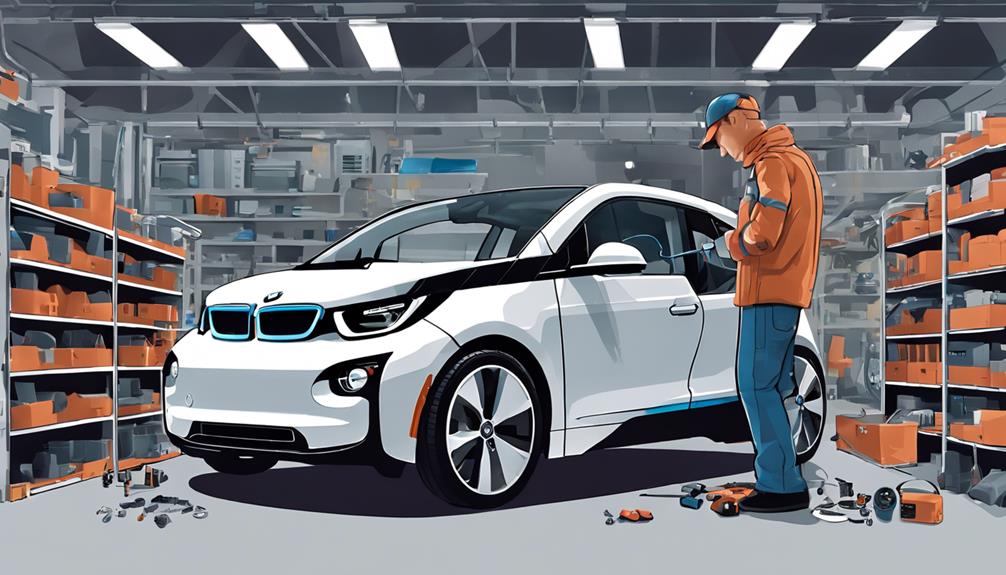
Traversing the maintenance landscape for a BMW i3 can be a challenging endeavor due to the scarcity of parts resulting from its unique carbon fiber reinforced plastic build. When it comes to dealing with the availability of parts for your BMW i3, here are some key points to keep in mind:
- Parts scarcity: Finding specific components for repairs or maintenance can be a real treasure hunt due to the specialized construction of the vehicle.
- Warranty importance: Ensuring your warranty coverage is vital to guarantee access to the necessary parts and repairs.
- Longer wait times: The need for specialized parts may lead to extended waiting periods for repairs, testing your patience.
- Potential cost increase: The rarity of these parts could potentially drive up repair costs, impacting your wallet.
- Resource-intensive sourcing: Compared to more mainstream electric vehicles, locating parts for the BMW i3 might demand extra effort and resources from you.
Warranty Issues Due to Unique Build
When it comes to the BMW i3's warranty, you'll find yourself maneuvering through a maze of limitations due to its unique construction.
The specialized build of the i3 raises concerns about parts availability, potentially impacting repair costs and maintenance.
Owners may encounter a bumpy road when seeking warranty coverage for this innovative yet complex vehicle.
Warranty Limitations
Traversing the warranty landscape for BMW i3 can prove challenging due to the exceptional construction materials used in its design, necessitating a thorough coverage plan. When considering warranty limitations for your BMW i3, keep in mind the following:
- Warranty coverage may be restricted due to the unique build of the car.
- Limited availability of parts for repairs can impact warranty services.
- The lightweight design of the i3 may affect safety ratings, emphasizing the need for extensive warranty options.
- Specialized construction of the vehicle could lead to difficulties with warranty claims.
- To address potential repair needs associated with the distinct build of the i3, exploring comprehensive warranty options is essential.
Parts Availability Concerns
Exploring the warranty landscape for the BMW i3 can be a complex endeavor, especially when considering the challenges posed by parts availability due to its unique build with carbon fiber reinforced plastic components. Owners of the BMW i3 may encounter difficulties in sourcing replacement parts due to the unconventional materials used in its construction. This can lead to potential warranty issues, as specialized components may not be readily available, causing delays in repairs. Understanding the warranty policies and parts availability is essential for addressing maintenance concerns effectively. Below is a table highlighting the impact of parts availability concerns on warranty issues:
| Parts Availability Concerns | Warranty Issues |
|---|---|
| Limited availability of parts | Potential coverage gaps |
| Challenges in finding replacement parts | Extended repair times |
| Specialized components may not be readily available | Increased likelihood of warranty disputes |
Repair Costs Impact
Exploring the world of repair costs for the BMW i3 can be a financially intricate journey, influenced by the unique build of the vehicle with carbon fiber reinforced plastic components. When it comes to repair costs impact, consider the following:
- Limited Availability: Parts for the BMW i3 aren't as readily available as for traditional vehicles.
- Specialized Materials: The unique construction of the BMW i3 requires specialized materials, leading to higher repair costs.
- Critical Importance: Due to the specialized components, warranty coverage is critical for BMW i3 owners.
- Direct Manufacturer Orders: Replacement parts may need to be ordered directly from the manufacturer, increasing repair times and costs.
- Higher Repair Costs: Be prepared for potentially higher repair costs and longer wait times due to the BMW i3's unique design and construction.
Battery Degradation Over Time
Battery degradation in the BMW i3 can greatly impact the driving range and overall performance of the vehicle over time. Several factors contribute to this issue, such as temperature variations, driving habits, and charging routines. Monitoring the battery health and adhering to manufacturer guidelines can help prolong its lifespan and maintain peak performance. Below is a breakdown of factors influencing battery degradation in the BMW i3:
| Factors | Description |
|---|---|
| Temperature | Extreme temperatures, both hot and cold, can accelerate battery degradation in the BMW i3. |
| Usage Patterns | Aggressive driving or frequent rapid acceleration can contribute to faster battery deterioration. |
| Charging Habits | Overcharging or consistently depleting the battery to very low levels can impact its long-term health. |
Being mindful of these factors and taking proactive steps to care for your BMW i3's battery can enhance your driving experience and help mitigate potential issues associated with degradation over time.
High Cost of Ownership
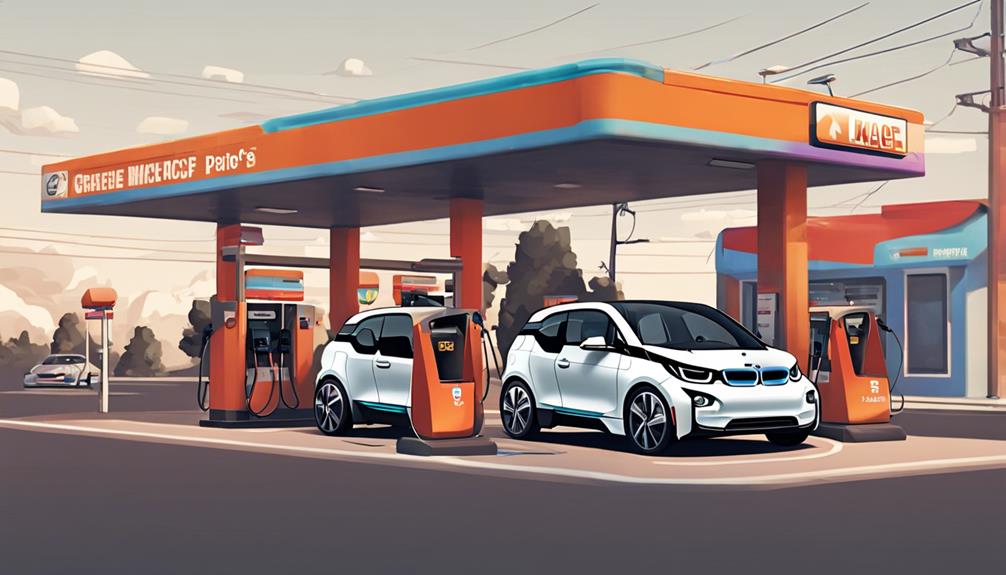
The ownership costs of the BMW i3 can pose a financial challenge due to its steep initial pricing and higher maintenance expenses compared to traditional gasoline vehicles. Here are some reasons why the high cost of ownership can be a concern for BMW i3 owners:
- Expensive Initial Pricing: The BMW i3 comes with a premium price tag, making it a significant investment upfront.
- Higher Maintenance Costs: Maintenance and repair expenses for the BMW i3 tend to be pricier than those for traditional gasoline vehicles.
- Battery Replacement Expenses: As the battery technology ages, replacing the battery in the BMW i3 can be a substantial cost.
- Elevated Insurance Premiums: Due to its electric vehicle technology and specialized parts, insurance premiums for the BMW i3 may be higher.
- Rapid Depreciation: The resale value of the BMW i3 may depreciate quickly, potentially leading to financial losses for owners.
Consider these factors carefully when evaluating the overall cost of owning a BMW i3.
Inadequate Charging Infrastructure
Considering the high cost of ownership associated with the BMW i3, the inadequate charging infrastructure further compounds the challenges for owners of this electric vehicle. The struggle to find convenient and reliable charging stations adds a layer of complexity to an already demanding ownership experience. With limited charging stations available, i3 drivers often face range anxiety, especially on long trips or in areas with sparse infrastructure. The quest for compatible charging stations can be a challenging task, as not all stations meet the i3's specific requirements.
This scarcity of charging options not only impacts the usability and convenience of owning a BMW i3 but also raises concerns about the practicality of the electric vehicle. The lack of widespread charging infrastructure reveals a significant drawback for potential buyers, particularly those who heavily rely on long-distance travel or daily commutes. In a world where convenience is key, the inadequate charging infrastructure poses a significant hurdle for BMW i3 owners seeking seamless and stress-free driving experiences.
Limited Space and Functionality
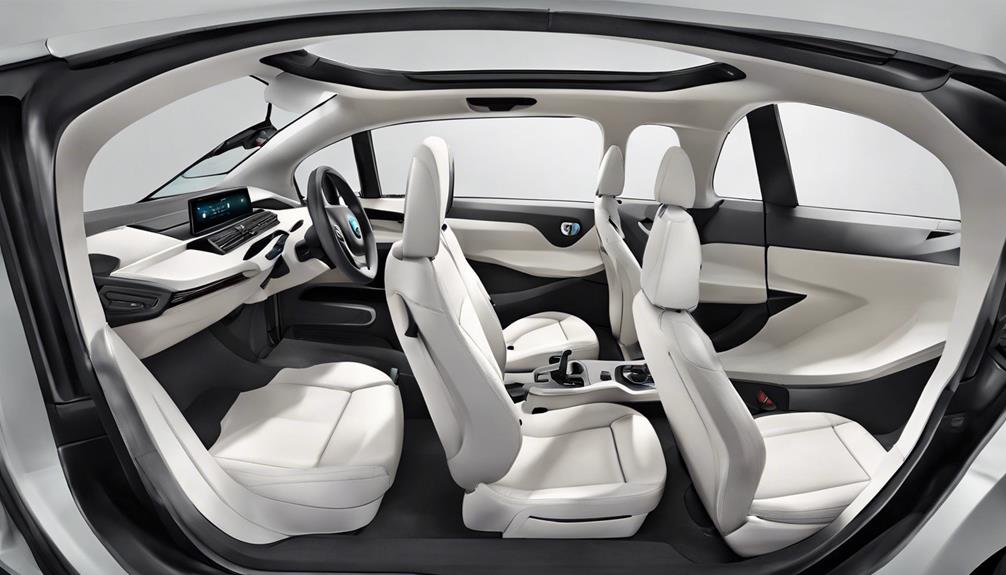
Amidst the sleek design and eco-friendly appeal of the BMW i3, the limited space and functionality within the vehicle present notable challenges for passengers and practicality alike. Here's why:
- The BMW i3 has limited space in the rear seat area, making it a tight fit for taller passengers.
- Cargo space is restricted due to the compact design, limiting the practicality for carrying larger items.
- Earlier models lacking rear doors can make access to the rear seats cumbersome, especially in tight parking spaces.
- The rear-hinged coach doors require extra space to open fully, which can be inconvenient in crowded parking lots.
- Limited functionality in the rear seating area may not be suitable for families or those needing more passenger space.
While the BMW i3 excels in many aspects, the constraints on space and functionality could pose challenges for those seeking a more versatile and accommodating vehicle experience.
Frequently Asked Questions
Do BMW I3 Have Problems?
Yes, BMW i3s do have problems you should be aware of. From 12-volt battery failures to delayed horn reactions, various quirks exist. Stay informed about these issues to make the most of your BMW i3 experience.
What Is the Life Expectancy of BMW I3 Battery?
Your BMW i3 battery's life expectancy is typically around 8-10 years or 100,000 miles. Factors like driving style and charging habits affect lifespan. Battery capacity may decrease by about 20% after 8 years.
Why Was the BMW I3 Discontinued?
You ask why BMW discontinued the i3. Sales dropped, demand shifted to newer models like the iX and i4. Competition got tougher with electric cars offering more range and tech. BMW adapted to market changes.
How Many Miles Can a BMW Electric Car I3 Last?
You can expect a BMW i3 electric car to last up to 153 miles on a single charge. With the optional gasoline engine, this range can be extended to around 200 miles. Perfect for city driving and short commutes.
Conclusion
Overall, owning a BMW i3 comes with its fair share of challenges. From limited range and safety concerns to high costs and inadequate charging infrastructure, there are several common problems that owners may face.
However, with careful research and planning, these issues can be mitigated. Despite its drawbacks, the BMW i3 remains a sleek and innovative electric vehicle option for those looking to make a sustainable choice in their automotive selection.

